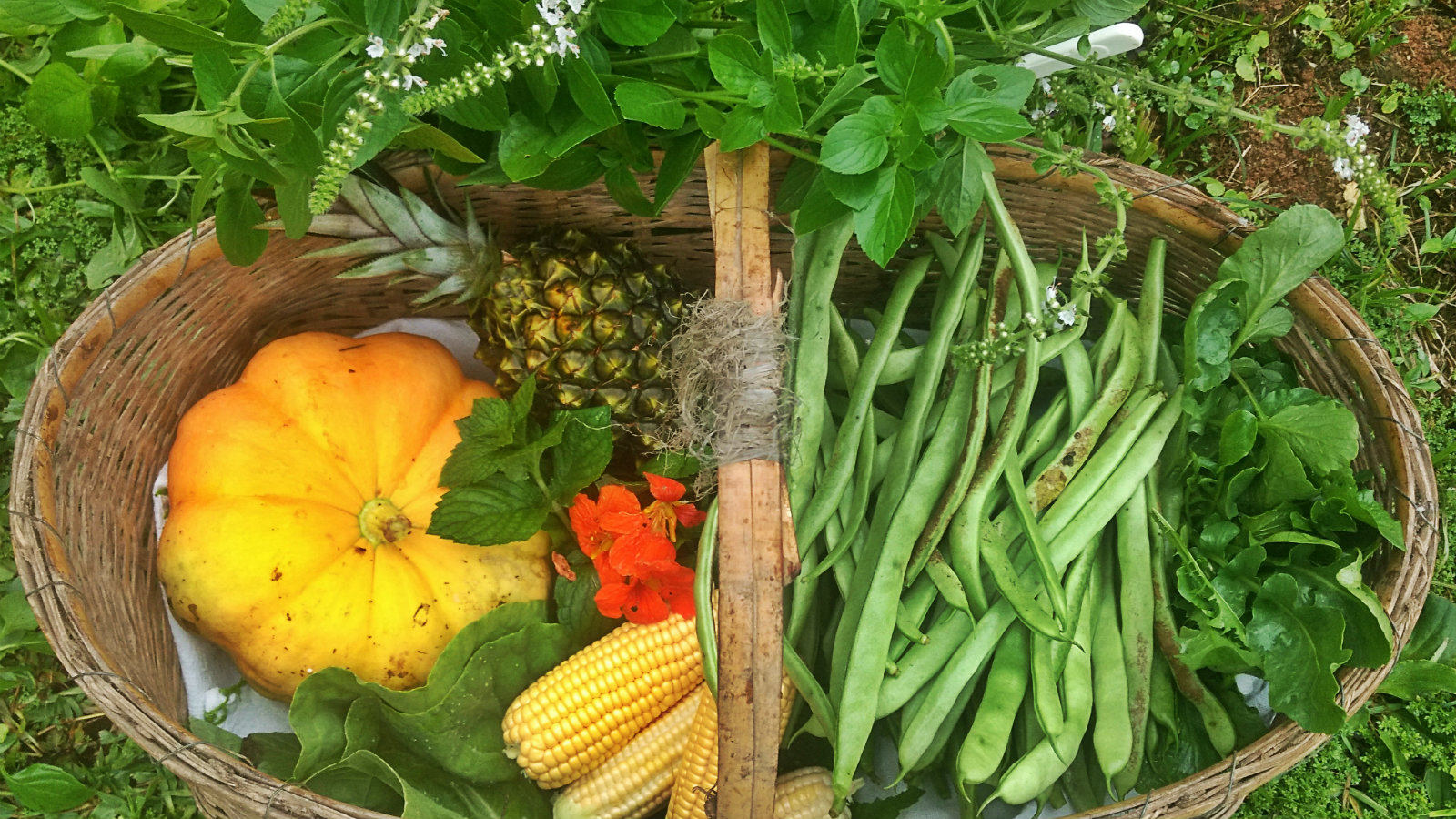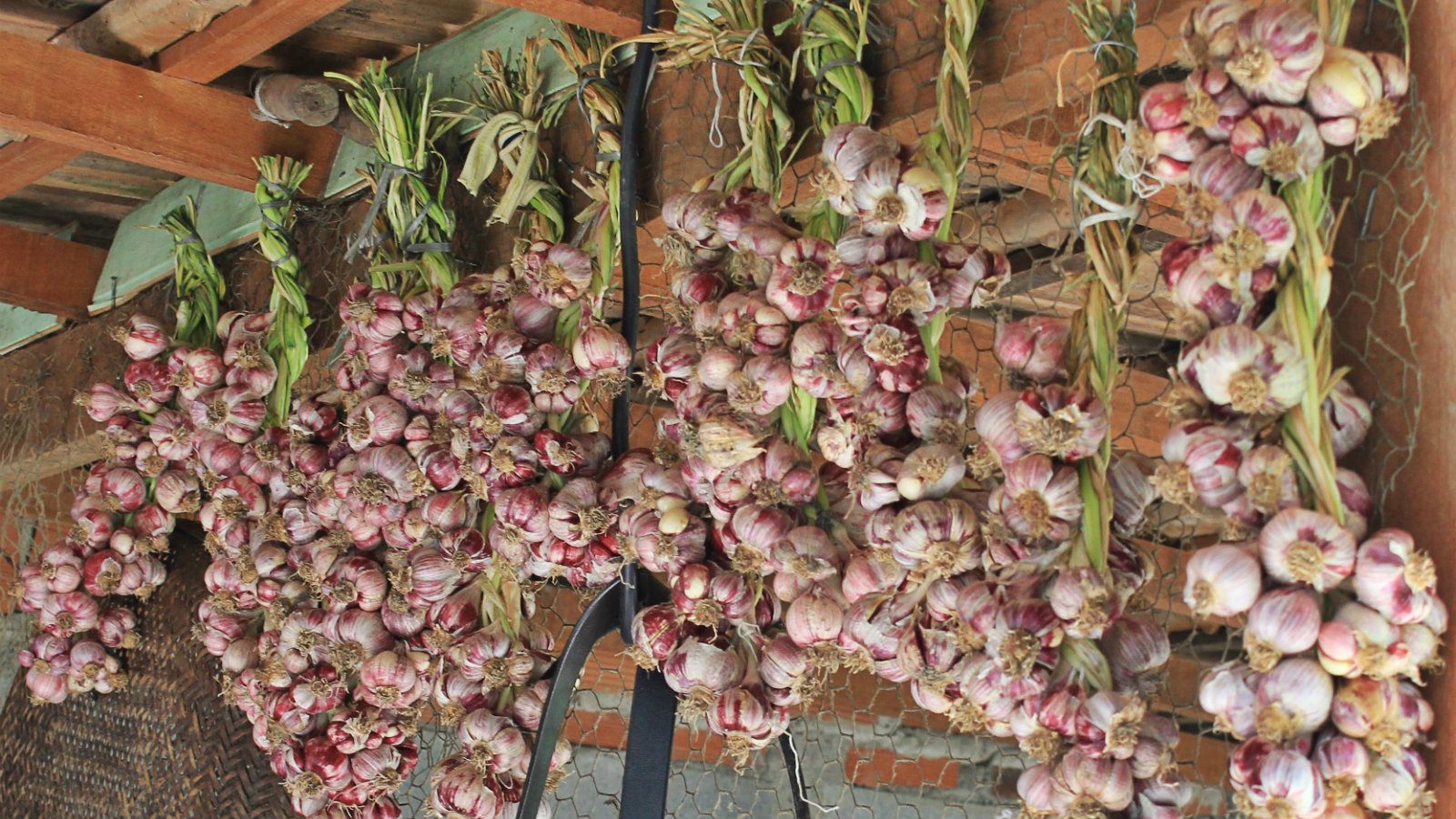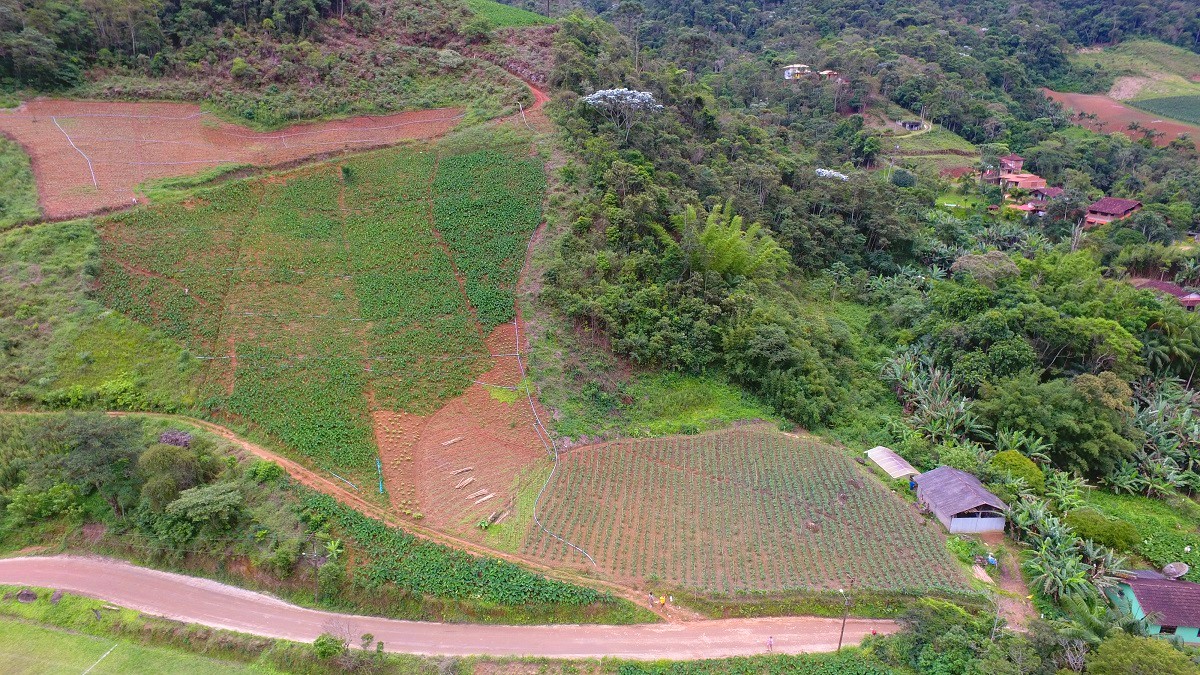The local family agriculture is an attraction of perfumes, textures, colours and tastes for visitors. Harvesting the manioc and yams from the land, collecting leaves of taioba or of spinach still damp from the dew, feeling the aromas of the herb teas and seasoning, picking a fruit from the tree or collecting the honey from the its original hive, are divine pleasures for the tasting by everyone.
Walking on the properties of the circuits, chatting and listening to the many stories of the people, tasting their delicious foods next to a wood-burning stove, such as the beans from the land are unforgettable moments.
The peculiarities of the mountainous region and the agricultural practices adopted limited the occupation of the most accessible areas, forming a peculiar landscape, where plantations and pastures for small animal raising of cattle and goats ended up on the highest parts of the properties, along with the native vegetation that was not completely cleared. This allowed the conservation of areas of forest of great beauty.


The immigrants developed the agriculture in this region dedicated to growing coffee, to subsistence production and the raising of cattle, poultry and pigs. With the decline of coffee growing in the between 1930 and 1940, they moved on to selling yams, banana, beans, manioc, among others. The first farmers developed a model of migratory agriculture and of ‘pousio’ or fallow production, inherited from the indigenous population.
This practice alternates periods in which the land is cultivated producing for 2 to 4 years, depending on the fertility, for periods during which the land is left to “rest”, for regeneration. In olden times, the interval of rest varied from 4 to 10 years for the fertility of the soil to recover gradually and spontaneously. After this rest stage, the vegetation was cleared from the resting areas, with burning controlled by “aceiros” (strips of land cleared of vegetation, bordering the area to be burned, so as to contain
the fire), to eliminate scrub and thorns, making the land farmable. This practice is common in the original Brazilian populations, called traditional agriculture.
Scientific studies have already proven its sustainability, as it provides sufficient time for the regeneration of the soil, without the use of agricultural chemicals. As of the 1970’s, with the so-called green revolution, the agricultural practices changed with the introduction of chemical fertilisers, pesticides and industrialized seeds, which is now called conventional agriculture.
With the implementation of the environmental protection laws in the 1990’s, the practice of fallow and burning was restricted by farmers, under the justification that they were promoting the cutting of vegetation for regeneration of the Atlantic Rain Forest.
The setting up of the Macaé de Cima State Environmental Protection Area (APAMC) in 2001 intensified the conflicts between farmers and the environmental inspection bodies, who came to act rigorously, fining farmers who used the traditional management practices of ‘fallow areas’.
As a result, many farmers abandoned traditional agriculture and adapted themselves to conventional agriculture which is more noxious to the environment and to human beings due to the use of pesticides. There are three forms of agriculture practiced in the region: ‘organic and agroecological’, ‘traditional’ and ‘conventional’.
Recently, new regulations were passed to allow fallow use, provided the area is delineated with the environmental bodies, facilitating the natural regeneration of the soils and the reduction in the use of pesticides as a result of meetings between farmers, researchers, technicians and the State Environmental Institute– INEA.
The high costs of production, due to the use of defensive chemicals, and the demand for tourism have made some farmers become involved in multiple activities, performing other activities related to tourism, civil construction, commerce, fabrication of lingerie, as well as the renting of houses.


As a place where its traditional population over decades reconciled agriculture with the conservation of forests and water sources using techniques less aggressive to the environment and to the health of farm workers than those used in conventional agriculture with its pesticides, a dialogue of knowledge had to be brought about, recovering ancient practices and popular wisdom, in partnership with technical-scientific knowledge.
Agroecology is the alternative for the promotion of this sustainable agriculture, as it is based on the interactions of human beings with the environment, respecting the local ecology, the animals, the plants, the farmers, the consumers, traditional knowledge and the technical-scientific knowledge, seeking the equilibrium between human beings, their animal raising activities and nature. Agroecology has been gaining strength in the region through numerous initiatives of the traditional population and the so-called “neo-rurals”, people coming from the urban centres in search of rural space for new creations and opportunities, with a better quality of life. The properties of this collective develop creative and inspiring agroecology, syntropy and permaculture projects.

